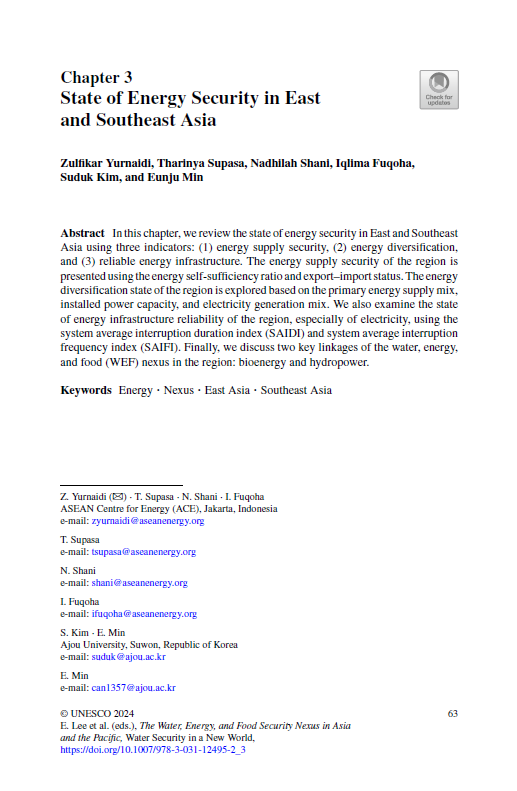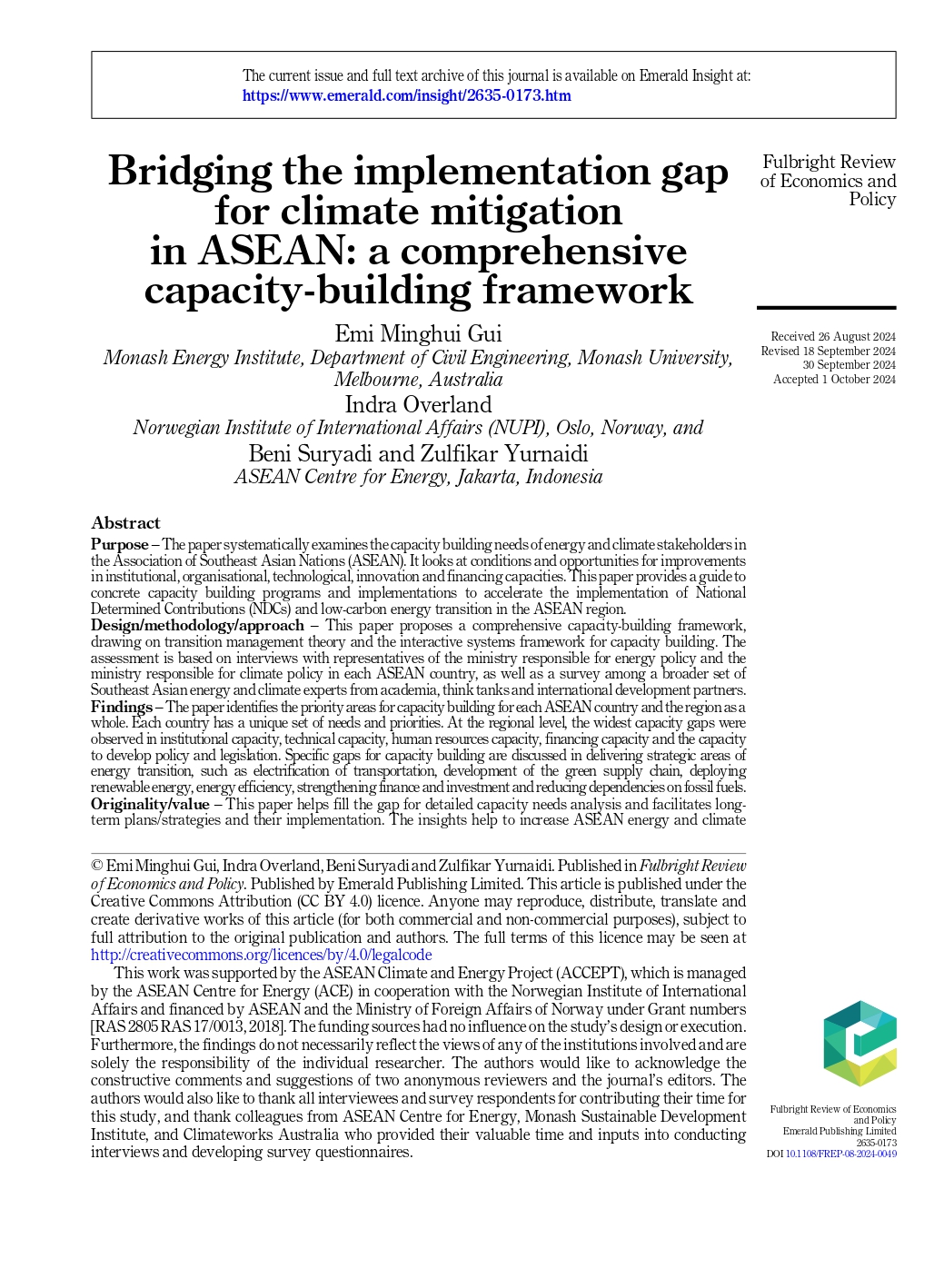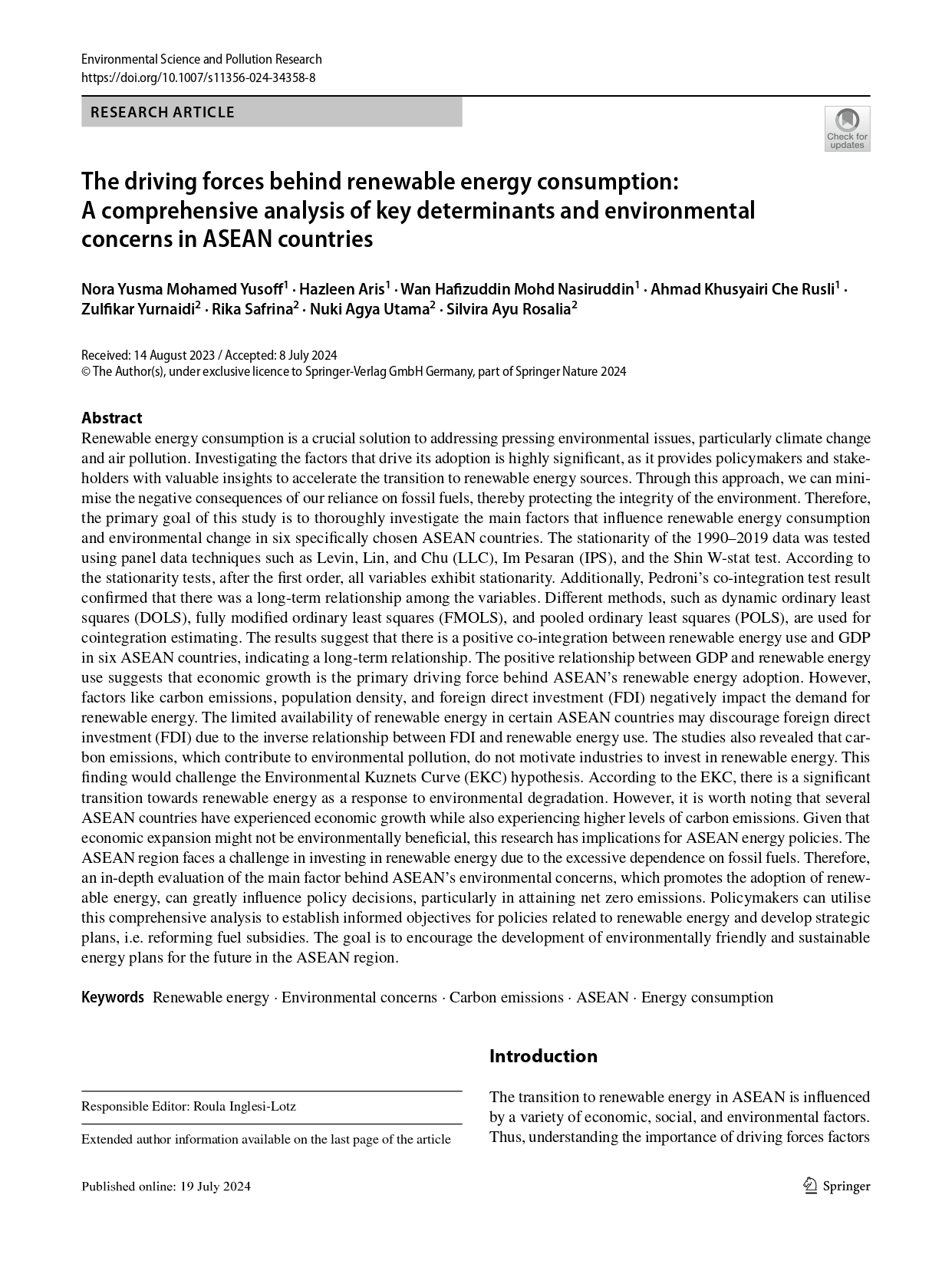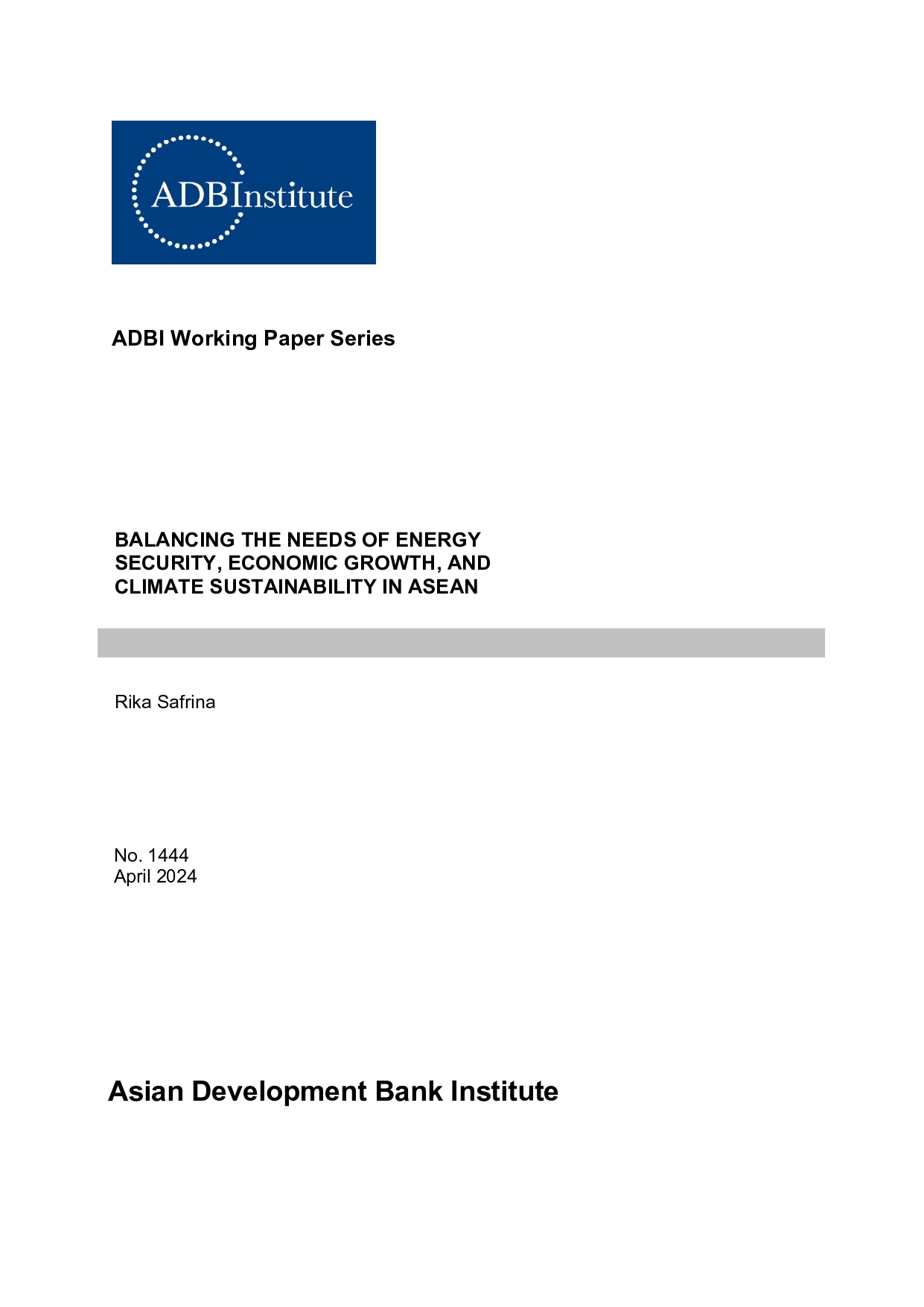At the Conference of the Parties of the UNFCCC (COP 27), the ASEAN Member States (AMS) reaffirmed their commitment to the Paris Agreement by pledging to achieve net zero or carbon neutrality targets by 2050. According to the 7th ASEAN Energy Outlook (AEO7) study, ASEAN’s GHG emission will rise 3.7-fold to 6,704 MtCO2-eq in 2050 from 1,815 Mt in 2020. This will require all AMS to scale up their efforts to reach their greenhouse gas (GHG) emission target, and one of them is by introducing carbon pricing to smoothen the transition by encouraging more renewable energy use. Currently, some AMS have already introduced or proposed carbon pricing. Singapore has introduced carbon tax implementation since 2019. Indonesia has been stepping up its commitment to enforce both carbon tax and emission trading system (ETS) by introducing numerous supporting policies. Malaysia, Thailand, and Vietnam are anticipating launching ETS as their latest climate action plan. A question on how effective carbon pricing implementation to reduce regional emission may come up and this paper shed lights to answer this question through expert interviews and literature reviews. The findings indicate that carbon pricing may reduce emissions, especially from power generation and manufacturing industry, and support the transition to a low-carbon economy, helping the region reach carbon neutrality or net zero targets by 2050.
Keywords: Carbon Pricing, ASEAN, Energy, Emission.





















